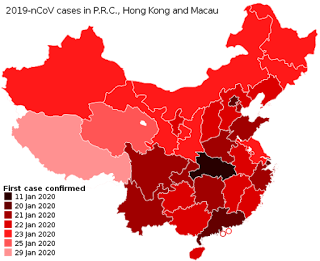Researchers find way to use 'deep learning' to identify birds
So-called "deep learning techniques", such as what are called convolutional
neural networks (CNNs), have been exciting ecologists lately. In a paper published this week in Methods in Ecology and Evolution with the British Ecological Society, researchers show how such tools can automatize the analysis of various types of bird data, ranging from species abundance to behaviors, and from sources such as pictures or audio recordings (reviewed in Christin, Hervet, & Lecomte, 2019).
Such identification, the authors contend, is crucial when trying to answer questions related to evolutionary biology and is mostly performed by marking animals with tags. "Such methods are
well-established, but often make data collection and analyses time-consuming, or limit the contexts in which data can be collected," the researchers write. Computational advances, in particular regarding deep learning -- part of machine learning methods based on artificial neural networks -- can help researchers overcome the limitations of collecting large-scale data across contexts. However, one of the challenges has been the need to collect and identify hundreds to thousands of individually labeled pictures to train convolutional neural networks (CNNs). In deep learning, a CNN is a class of deep neural network, most usually applied to analyzing visual imagery.
The authors show how this method facilitated automating the collection of training data, generating training datasets, and training CNNs to allow identification of individual birds.
That may sound like a mouthful to anyone who just wants to go look at pretty birds and ask, 'Is that a robin or a cardinal?' But if one digs a little deeper, she will see that in this modern age applying such mechanical methods of identification is in keeping with the times, whether we are talking about space travel or just terrestrial scientific pursuits such as these. If there is RFID in space, so too should bird watchers and scientists dip their beakers into more elaborate schemes.
The authors write: "We apply our procedures to three small bird species, the sociable weaver Philetairus socius, the great tit Parus major and the zebra finch Taeniopygia guttata,
representing both wild and captive contexts. We first show how the collection of individually labeled images can be automated, allowing the construction of training datasets consisting of hundreds of images per individual. Second, we describe how to train a CNN to uniquely re-identify each individual in new images. Third, we illustrate the general applicability of CNNs for studies in animal biology by showing that trained CNNs can re-identify individual birds in images collected in contexts that differ from the ones originally used to train the CNNs."
The researchers collected pictures from a population of sociable weavers at Benfontein Nature Reserve in Kimberley, South Africa, and a population of great tits, from a population in Möggingen, southern Germany. For both species, birds were fitted with PIT‐tags as nestlings and were habituated to artificial feeders that are fitted with RFID antennas, as part of on‐going studies in these populations. They also collected data from a captive population of zebra finches housed in Möggingen, Germany.
The researchers, further, present a potential solution to solve the issues of new incoming individual birds. "Overall, our work demonstrates the feasibility of applying state-of-the-art deep
learning tools for individual identification of birds, both in the laboratory and in the wild."
The researchers cite the use of deep learning methods research for individual identification in humans (e.g. Ranjan et al., 2018), where it has been very successful. They also cite past use of a database of more than 3 million labeled pictures to train a CNN to automatically recognize 48 African animal species and other individual identification of other species such as pigs (Hansen et al., 2018) and elephants (Körschens,Barz, & Denzler, 2018). "However, the application of deep learning to smaller taxa, and specifically birds, remains unexplored. In birds, manual examination of pictures or video recordings of visually marked populations is well-established. For studies on both wild (i.e. free-ranging monitored populations) and captive animals, researchers often mark individuals with unique combinations of color bands to facilitate observations in the field or, later, in recorded images. However, relying on humans for individual identification and data collection is extremely time-consuming (Weinstein, 2018).
"In the past decade, many studies have made use of automated animal-tracking devices (e.g. GPS) and sensor technologies (e.g. RFID; reviewed in Krause et al., 2013). Such animal-borne tracking devices, however, often limit researchers to study individuals in particular contexts. For many studies,
obtaining visual records remains critically important.
"For example, studying parental care in birds requires video recordings to visually
identify which birds are providing care to the chicks and how often they do it..."
"Other computer vision-based solutions rely on tags or marks to assist with computer
tracking and individual identification (e.g. Alarcón-Nieto et al., 2018)," the authors state. To date, all these methods have remained mostly limited to studying animals in captivity. The research published this week extends to birds, whom as mentioned were studied both in and out of captivity.
"Deep learning methods have the potential to overcome many of the
limitations of the current automated methods, as they can identify
individuals by relying only on the natural variation in appearance
among individuals, while remaining tolerant to spurious variation
arising from recording conditions," say the authors.
For more information, please find the paper on the British Ecological Society website.
PHOTO: Parus major great titWikipedia Commons Images, Sławek Staszczuk



Comments
Post a Comment